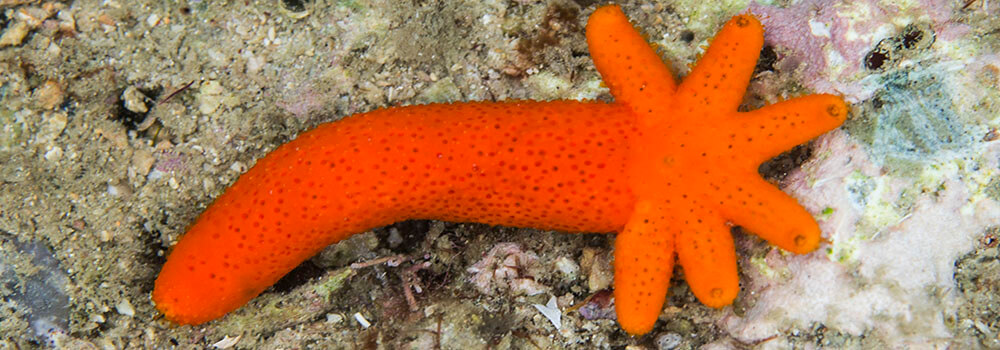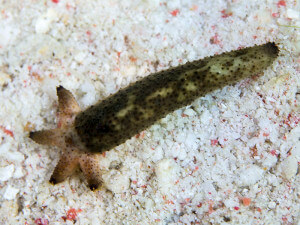
A sea star loses a limb
The word ‘autotomy’ comes from the Greek ‘auto’, meaning self, and ‘tomy’, meaning severing. Animals with this amazing ability can self-sever a body part only to regenerate it at a later time. For almost all of the animals that possess this ability, the purpose is purely defensive. For example, lizards are able to sever their tails, which are then used as a decoy to attract the attention of their predator while the lizard makes a quick get-away. As described in the opening chapter, sea cucumbers eviscerate their organs with the same strategy in mind. Bees will autotomize their legs if stung there by a wasp in order to avoid a likely death if the venom reaches vital organs. In each of these cases a small part of the entire animal is temporarily sacrificed so that the individual remains largely intact. Sea stars also employ this technique; however, a few species have taken the technique to another level.
The multipore and Luzon sea stars (Linckia multifora and Echinaster luzonicus) are common sea stars on tropical coral reefs. Like their family members, they can sever their arm or arms if the need warrants. Unlike many of their family members though, their discarded arm can regenerate another entire animal! General sea star anatomy shows that each of their arms possess ampullae, tube feet, and digestive glands. While the complete water vascular system, mouth, and anus are located in the disk, the arm can actually still function. Tube feet still provide mobility and sensory information, and it has been suggested that they are also capable of absorbing nutrients.
Regenerating the body is no small task. First, the point of separation develops into a crescent-shaped ridge. Next, small grooves develop from this ridge, and a mouth develops on the aboral side. Finally, new arm growth begins with fairly even development. Studies on a multipore sea star found that it takes a 1 cm arm over ten months to regenerate a new, but not full size body. While this incredible feat of autotomy and regeneration certainly increases the chances that the individual will survive an attack, it is also thought that this may be a form of asexual reproduction.

